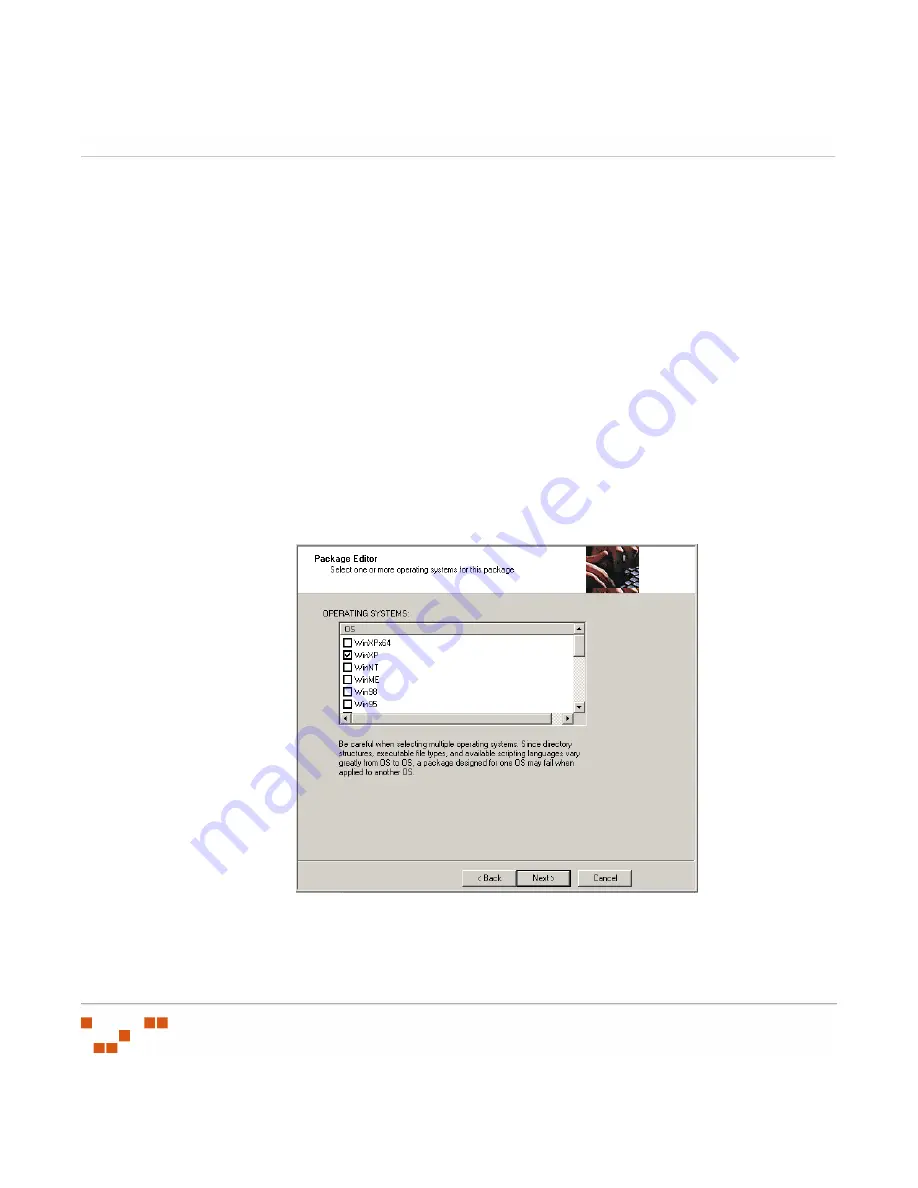
U
SING
V
ULNERABILITIES
AND
P
ACKAGES
- 54 -
3.
In the
Package Editor
, type the
name
,
description
(optional), and an
Informational
URL
(optional).
•
Name
- A name or title for the package. Ensure package names are descriptive and
short. Packages of the same name are permitted and names can be changed later.
•
Description
- An optional description allows you to specify details about the
package. A good practice would be to add additional information as the package is
modified, or to provide cautions and/or warnings to the potential user.
•
Information URL
- Link to additional information on the contents and usage of the
package. The information URL will be displayed when viewing package information
and allows the user to link to extended package information.
NOTE
:
Deployment options for manual installations of a patch can be included in the
Description
field. See
Including Deployment Options in a Package
on page 60 for more
information about using deployment options.
4.
Click
Next
.
5.
In the
Operating Systems
page, select the target operating systems from the list. These
are the platforms running devices that are the target of the package deployment.
Figure 3-14:
Package Editor - Select Operating System
NOTE
:
Since directory structures, executable file types, and available scripting languages
vary greatly within operating systems, a package designed for one operating system may
fail when applied to another operating system.
Summary of Contents for ZENWORKS PATCH MANAGEMENT 6.4 SP2 - SERVER
Page 1: ...User Guide ZENworks Patch Management 6 4 SP2 ...
Page 44: ...USING ZENWORKS PATCH MANAGEMENT 28 ...
Page 138: ...WORKING WITH DEPLOYMENTS 122 ...
Page 212: ...USING GROUPS 196 ...
Page 236: ...REPORTING 220 ...
Page 308: ...CONFIGURING DEFAULT BEHAVIOR 292 ...
Page 332: ...USING THE AGENT 316 The Agent Control Panel opens Figure 10 19 Agent Control Panel ...
















































